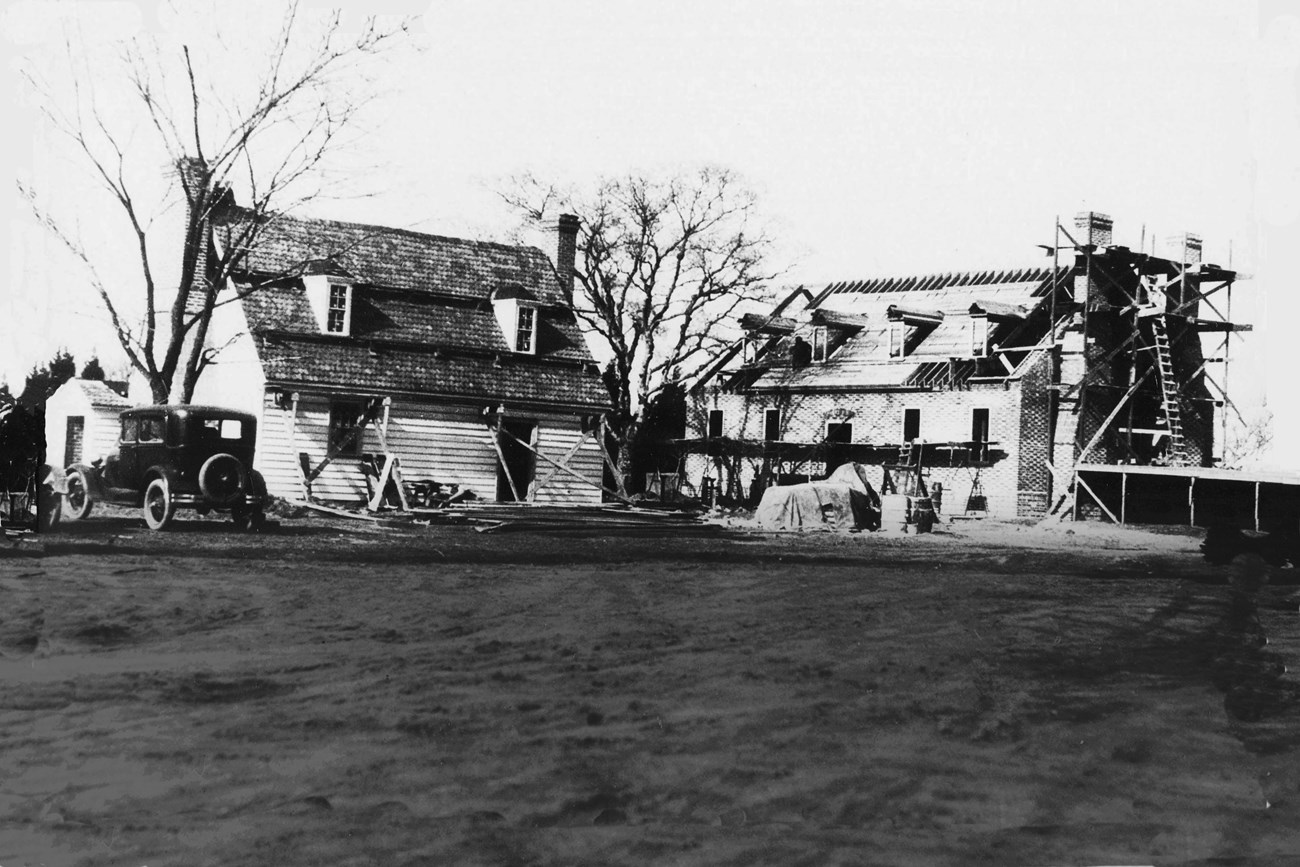Last updated: August 31, 2021
Article
The Colonial Revival Movement at George Washington Birthplace

NPS image
Peaking between the two World Wars, the Colonial Revival Movement coincided with George Washington's 200th birthday and the 150th anniversaries of the American Revolution and the Constitutional Convention. The Wakefield National Memorial Association (WNMA), created in 1923, took on the project of restoring George Washington Birthplace using the guidelines of the Colonial Revival Movement.
The main focus of the WNMA was to create a "memorial house" to commemorate George Washington's birth at the property in 1732. The house would take center stage in the group's central plans. Large fireplaces and wood paneling dominated the interior of the house, while a large, brick structure rose above the surrounding landscape. The WNMA even approached Congress to request funding to move the obelisk that had been installed at the location where they wanted to build the memorial house as it was believed to be where the original birth house had stood.
Although the WNMA did some wonderful things, including raising almost $100,000 during the midst of the Depression, and, with the help of John D. Rockefeller, Jr. increasing the land holdings from 87 acres to over 360 acres, the group was unable to demonstrate what would have been on the property in the 18th century and before. The buildings and the landscapes constructed here presented a romanticized version of George Washington's childhood, rather than what the Washington family would have known. There was no mention of the enslaved, indentured servants, or Native Americans in their recreation, just a sanitized version of American history.
The Colonial Revival Movement was not about authenticity; it was about evoking a feeling. At many places across the nation, and at a time when it seemed the new America was further and further away from the traditions of the Revolutionary generation, these places reinstilled patriotic feelings in the public and made them vacation destinations. Of course, what they were presenting wasn't authentic. And therein would lie the controversy that existed, and still exists here at George Washington Birthplace.






